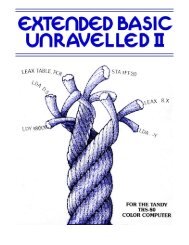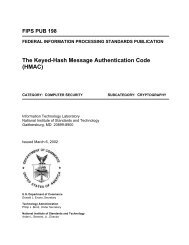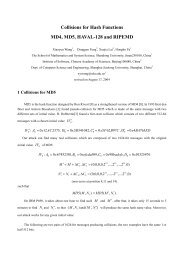sonet 101
sonet 101
sonet 101
You also want an ePaper? Increase the reach of your titles
YUMPU automatically turns print PDFs into web optimized ePapers that Google loves.
What is SONET?<br />
SONET NETWORK ELEMENTS<br />
Although network elements (NEs) are compatible at the OC-n level, they may<br />
differ in features from vendor to vendor. SONET does not restrict manufacturers<br />
from providing a single type of product, nor require them to provide all types.<br />
For example, one vendor might offer an add/drop multiplexer with access at DS-1<br />
only, whereas another might offer simultaneous access at DS-1 and DS-3 rates.<br />
See Figure 1-11.<br />
Add/Drop Multiplexer<br />
A single-stage multiplexer/demultiplexer can multiplex various inputs into an<br />
OC-n signal. At an add/drop site, only those signals that need to be accessed<br />
are dropped or inserted. The remaining traffic continues through the network<br />
element without requiring special pass-through units or other signal processing.<br />
In rural applications, an ADM can be deployed at a terminal site or any intermediate<br />
location for consolidating traffic from widely separated locations. An ADM<br />
can also be configured as a survivable ring.<br />
20<br />
Drop and Repeat<br />
SONET enables drop and repeat (also known as drop and continue)—a key<br />
capability in both telephony and cable TV applications. With drop and repeat,<br />
a signal terminates at one node, is duplicated (repeated), and is then sent to the<br />
next node and to subsequent nodes (see Figure 1-11).<br />
In ring-survivability applications, drop and repeat provides alternate routing for<br />
traffic passing through interconnecting rings in a “matched-nodes” configuration.<br />
If the connection cannot be made through one of the nodes, the signal is repeated<br />
and passed along an alternate route to the destination node.<br />
In multi-node distribution applications, one transport channel can efficiently<br />
carry traffic between multiple distribution nodes. When transporting video, for<br />
example, each programming channel is delivered (dropped) at the node and<br />
repeated for delivery to the next and subsequent nodes. Not all bandwidth (program<br />
channels) need be terminated at all the nodes. Channels not terminating at<br />
a node can be passed through without physical intervention to other nodes.






